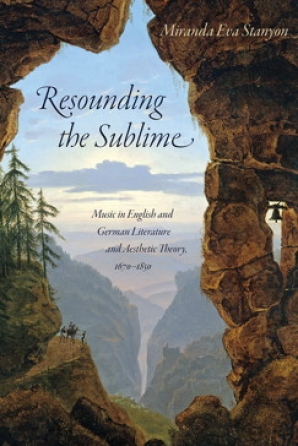Resounding the Sublime: Music in English and German Literature and Aesthetic
Resounding the Sublime: Music in English and German Literature and Aesthetic Theory, 1670-1850, Miranda Eva Stanyon.
What does the sublime sound like? Harmonious, discordant, noisy, rustling, silent? This book rereads and resounds the crucial aesthetic category of the sublime in English and German literatures of the long eighteenth century. It shows how sonorous sublimes lay at the heart of a central and transformative discourse. For Enlightenment and Romantic era listeners, the musical sublime represented a sonic encounter of the most extreme kind, one that tested what humans were capable of feeling, imagining, thinking, and becoming. In resounding the sublime, the book reveals an aesthetic which was always already resonant.
But the sublime and music have not always sung from the same hymn sheet, the book argues. There was an antagonistic intimacy between the two, from the sublime's rise to prominence in the later seventeenth century, through the upheavals associated with Kant in the late eighteenth century, and their reverberations in the nineteenth. Offering readings of canonical texts by Longinus, Dryden, Burke, Klopstock, Herder, Coleridge, De Quincey, and others alongside lesser-known figures, Resounding the Sublime shows how the literary sublime was inextricable from musical culture, from folksongs and ballads to psalmody, polychoral sacred music, and opera. The book thus draws literature into dialogue with sound studies, musicology, and intellectual and cultural history to offer new perspectives on the sublime as a phenomenon which crossed media, disciplines, and cultures.
Visit the Combined Academic Publishers website
